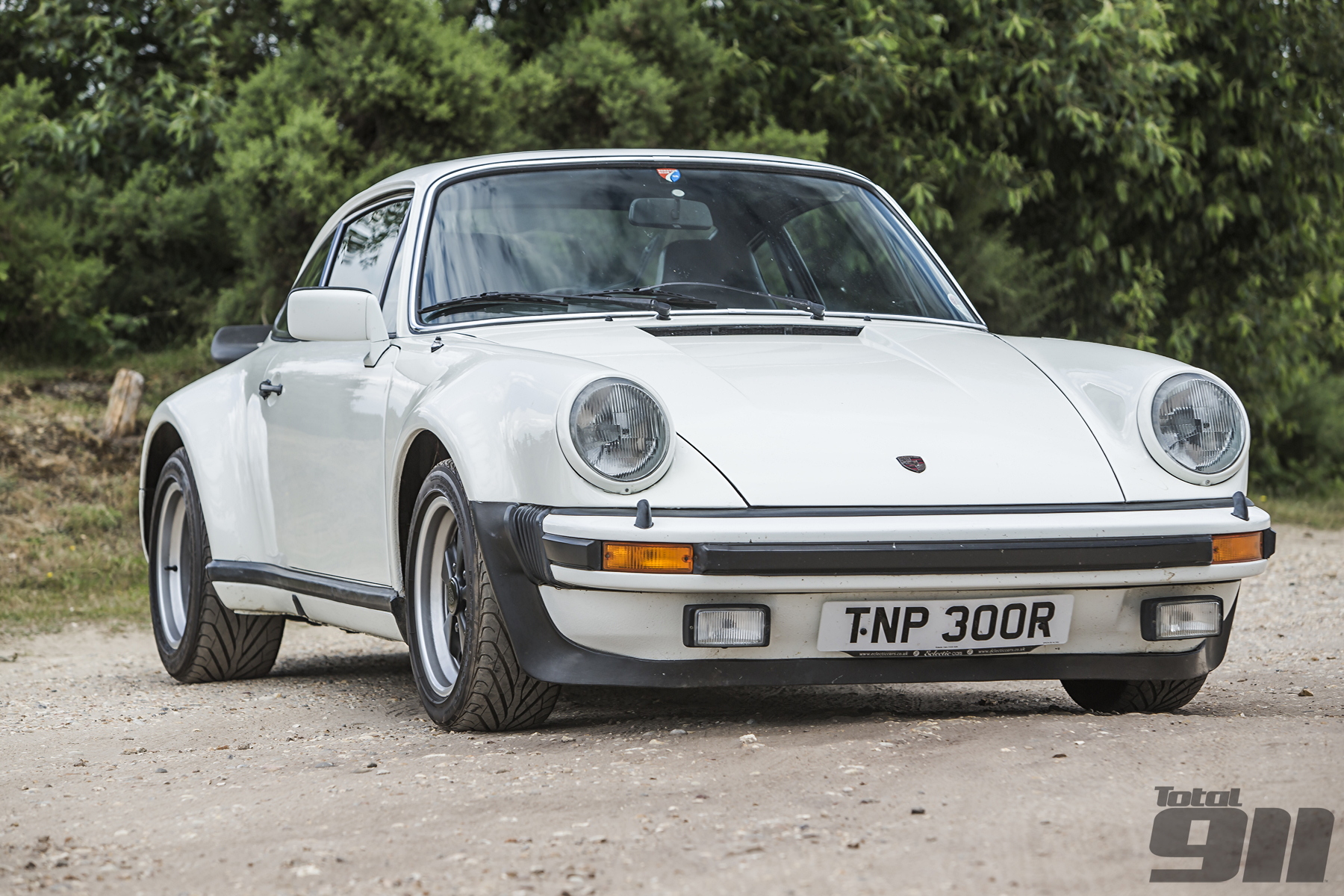Turbocharging: A Porsche 911 history
41 years ago, the original Porsche 911 Turbo was officially released to the public after its headline-making reveal at the IAA in Frankfurt a year previous. However, the story of the 911 Turbo actually begins in 1972 when Louise Piëch was presented with a 2.7-litre narrow-bodied Turbo prototype.
Given as a 70th birthday present, Piëch used the car extensively, proving the forced induction concept that would be made available to customers in 3.0-litre form come 1974.
Internally known as the 930, the original 911 Turbo’s 3.0-litre flat six (hidden underneath the iconic whale tail rear spoiler) developed 260bhp and was mated to a four-speed version of the 915 gearbox.
For 1978, the 930 3.3 was introduced. The larger capacity and addition of an intercooler brought a boost in power – up to 300bhp – and the brakes were upgraded however, the unpopular four-speed shifter was retained until a final-year update in 1989 brought the five-speed G50 ‘box into play.
During the latter years of the Eighties, Porsche introduced the 930 SE, a limited edition 911 Turbo with a flat nose, mimicking the 935s that had dominated international sports car racing. The 330bhp version of the 3.3-litre flat six also found its way into the 930 LE in 1989, marking the end of the 930 lineage.
1990 was the first year since 1974 when customers couldn’t buy a brand new 911 Turbo so, for the following year, the 964 Turbo 3.3 was rushed to market utilising the 930’s engine, boosted to 320bhp.
The 964 generation also saw the introduction of the first 911 Turbo S with worldwide availability (the 930 SE was known as the ‘S’ in the USA). With RS-spec suspension, 381bhp engine and a lightweight ethos, the 964 Turbo S was a true monster.
However, the 964 Turbo 3.6 that followed it in 1993 was equally as potent. Featuring an all-new engine, the last 964 Turbo also introduced ‘Big Red’ brake callipers to world, shrouded beneath split-rim Speedline allows from the 964 3.8 RS.
In 1995, Porsche’s forced induction ethos became even more hardcore with the introduction of the 993 GT2, a car built to homologate Weissach’s racers for international competition.
The GT2 was a world apart from the new 911 Turbo released a year later. Borrowing a lot of technology from the 959 supercar, the 993 Turbo was the first 911 Turbo to feature twin turbochargers and four-wheel drive.
The 993 generation also saw another Turbo S model, this time with a host of lavish and luxurious options (as well as the obligatory boost in power). Only 345 were ever built.
Like the Carrera line-up, the 911 Turbo went water-cooled in 2001, switching to the fabled Mezger engine architecture developed for the 1998 24 Hours of Le Mans-winning 911 GT1-98, the climax of the GT1 programme (which saw a limited number of mid-engined, twin-turbocharged Straßenversions).
A GT2 version once again joined the 996 Turbo, the former developing 462bhp (42bhp more than the Turbo) before the 996 Turbo S closed the power gap to just 12bhp in 2004, the year that saw the end of the 996 generation.
The first generation 997 Turbo saw another innovation: variable turbine geometry allowed the parallel KKK turbochargers to optimise their operation at both low and high engine speeds, giving the 997.1 Turbo a monumental 620Nm of torque spread between 1,950-5,000rpm.
After the relatively ‘soft’ 996 version, the 997 GT2 returned to ‘Widowmaker’ to a more track-focussed setup, including an interior more akin to the GT3 than the standard 996 Turbo. It was the first road-going production 911 to break the 500bhp mark upon its release in 2007.
The 997 Turbo Gen2, unveiled in 2009, saw the introduction of the PDK gearbox and the 9A1-based DFI engine before the 997 GT2 RS provided Porsche fans with the fastest 911 road car ever. Its 7m18s lap around the ‘Ring still hasn’t been beaten by another neunelfer, including the latest 991 GT3 RS.
A Turbo S version of the 997 followed to see out the generation before the 991 Turbo and Turbo S were introduced concurrently in 2013. With 520hp and 560hp respectively, the duo were, for the first time, even wider than the relative Carrera 4 models and came with Porsche’s innovative rear-wheel steering.
Now though, as we know, the standard Carrera models have also made the switch to forced induction. The spec sheet for the 991.2 C2s and C4s reads like a pseudo 911 Turbo meaning that Porsche’s future will be filled with forced induction developments even more than its past.
For more historical online features, check out our full selection of ‘Porsche 911 history’ articles now.







Comments (0)